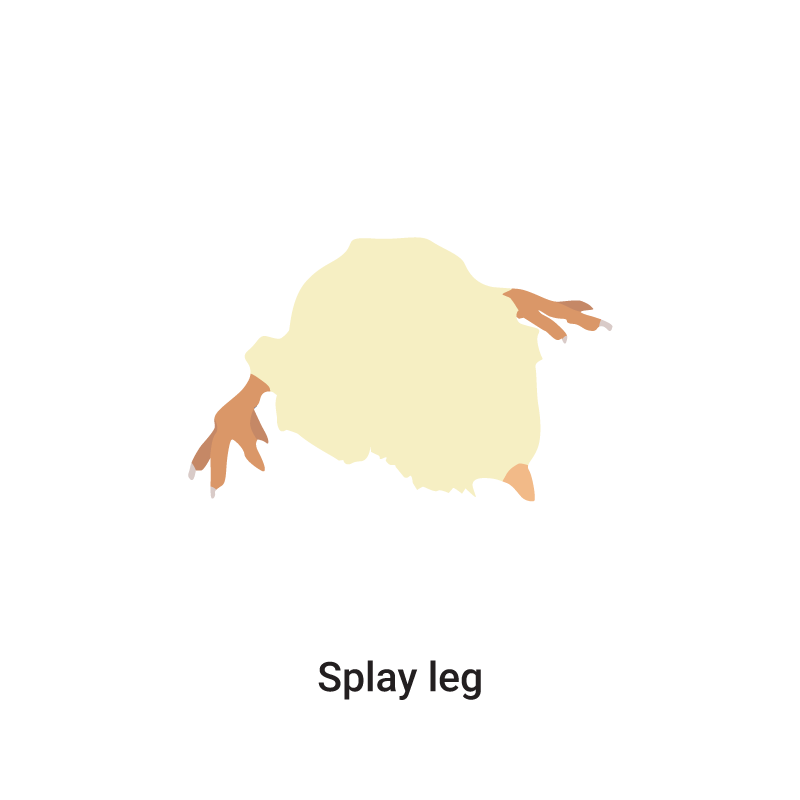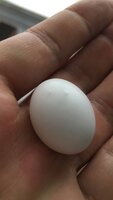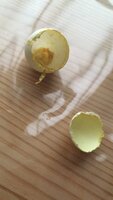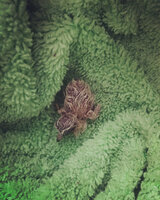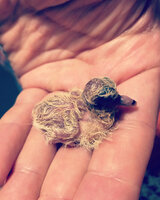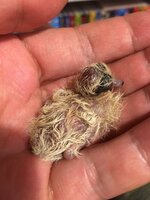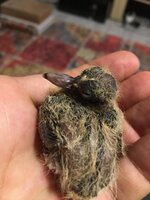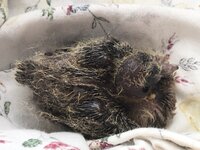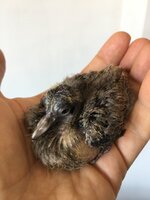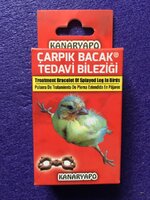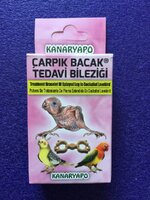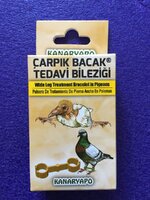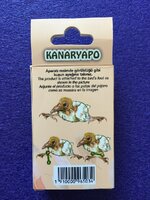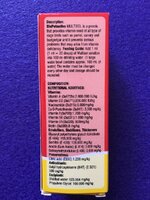Zara
♥❀Livin´ in Lovebird Land❀☼
Super Moderator
Avenue Veteran
Celebirdy of the Month
Mayor of the Avenue
Avenue Spotlight Award
Avenue Concierge
What is it?
Spraddle leg, also known as splayed leg(s), is a condition where the legs of a chick are sticking outwards and the chick is not able to support it´s own body weight.
A chicks legs should sit vertically under the body and not at an angle.
What causes it?
Insufficient bedding in the nest box is the number one cause. A chick in a bare nest box is unable to grab the floor and the weight of the chick forces it´s legs to slide outwards.
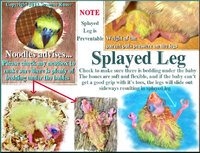
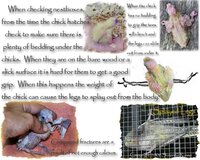
This condition can also be cause by poor diet in the parent birds, the chick positioned inside the egg incorrectly, parents brooding too tightly (putting too much weight on the chicks) amongst other factors.
Is it preventable?
Most of the time, yes. By preparing the nest box/brooder correctly the chick will have good grip and be less likely to develop this condition. Be sure the bottom is lined with at least 4 inches of aspen shavings. If you can't find aspen, you can use coarse pine but not fine pine as it can be easily ingested or inhaled and never use cedar as it is toxic. Press the shavings down gently, and create a nest dent for the chicks, remembering to make sure the bedding is always raised at the edges.
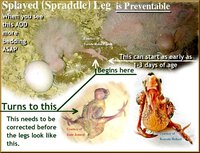
If your nest box is not deep and the parents are removing material, here is a tip;

Leaving unhatched eggs in the nest, or replacing them if they all hatch with fake eggs will also offer some support for growing chicks and help the parents not brood too tightly.
Is it treatable?
If this condition is noticed early on, it can often be fixed. However if it goes undetected or ignored, the bones will harden and set and the chick will be stuck like this for life.
If you have adopted or bought a bird that is not a young chick and notice that they have this condition, they can still adapt to their condition and life a happy life given that you adapt their environment to meet their needs.
How can we fix it?
There are a few different ways you can treat this condition. Essentially the legs are held in place by a split while the chick grows, starting by pulling the legs in a little under the bird but not completely and adjusting this each day slowly, pulling the legs in closer until they are back under the bird. Keep the splint on until the bird is able to stand with both legs vertically underneath.
It is recommended to do this with someone helping you. If you cannot manage to get any of the methods to work, or your bird removes all the types of splints you try, visit an avian vet as soon as possible for them to do it for you.
Methods range from making splints with pipe cleaners, tape, new makeup sponges and so on.
Here is a helpful video demonstrating the tape method;
If you are unsure if you are shortening the tape enough, @Mockinbirdiva suggests to measure the distance from the inside of each leg so you can see your progress with the shortening of the tape. Write it down and keep track of it. Every day, decrease the distance by at least a 1/4 inch until both legs are under the body as they should be.
Helpful links, including more details on how to fix this condition;

 www.parrotparrot.com
www.parrotparrot.com
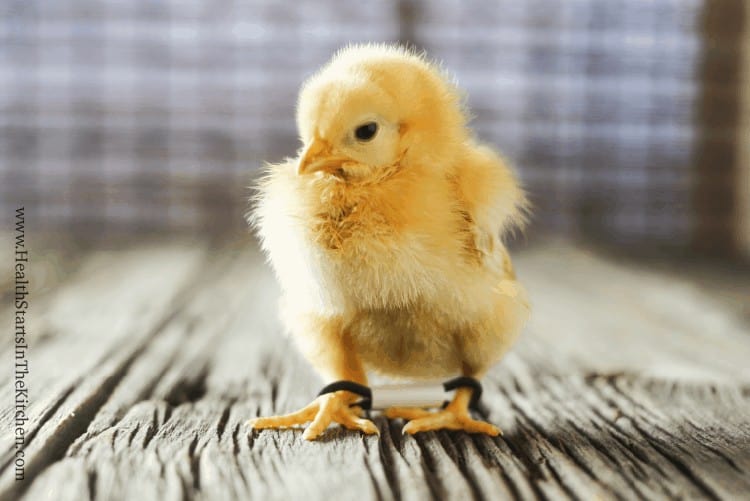
 healthstartsinthekitchen.com
healthstartsinthekitchen.com
Feel free to contribute and post links or information that could help others.
edit 10/01/2024 to fix broken link
Spraddle leg, also known as splayed leg(s), is a condition where the legs of a chick are sticking outwards and the chick is not able to support it´s own body weight.
A chicks legs should sit vertically under the body and not at an angle.
What causes it?
Insufficient bedding in the nest box is the number one cause. A chick in a bare nest box is unable to grab the floor and the weight of the chick forces it´s legs to slide outwards.


This condition can also be cause by poor diet in the parent birds, the chick positioned inside the egg incorrectly, parents brooding too tightly (putting too much weight on the chicks) amongst other factors.
Is it preventable?
Most of the time, yes. By preparing the nest box/brooder correctly the chick will have good grip and be less likely to develop this condition. Be sure the bottom is lined with at least 4 inches of aspen shavings. If you can't find aspen, you can use coarse pine but not fine pine as it can be easily ingested or inhaled and never use cedar as it is toxic. Press the shavings down gently, and create a nest dent for the chicks, remembering to make sure the bedding is always raised at the edges.

If your nest box is not deep and the parents are removing material, here is a tip;

Leaving unhatched eggs in the nest, or replacing them if they all hatch with fake eggs will also offer some support for growing chicks and help the parents not brood too tightly.
Is it treatable?
If this condition is noticed early on, it can often be fixed. However if it goes undetected or ignored, the bones will harden and set and the chick will be stuck like this for life.
If you have adopted or bought a bird that is not a young chick and notice that they have this condition, they can still adapt to their condition and life a happy life given that you adapt their environment to meet their needs.
How can we fix it?
There are a few different ways you can treat this condition. Essentially the legs are held in place by a split while the chick grows, starting by pulling the legs in a little under the bird but not completely and adjusting this each day slowly, pulling the legs in closer until they are back under the bird. Keep the splint on until the bird is able to stand with both legs vertically underneath.
It is recommended to do this with someone helping you. If you cannot manage to get any of the methods to work, or your bird removes all the types of splints you try, visit an avian vet as soon as possible for them to do it for you.
Methods range from making splints with pipe cleaners, tape, new makeup sponges and so on.
Here is a helpful video demonstrating the tape method;
Helpful links, including more details on how to fix this condition;

Splayed Leg Prevention And Treatment
Splayed legs are one of the most common chick issues, but rest assured this deformity is easily prevented with just a few basic precautions for your pair. If you already have a chick that is...
web.archive.org
Fixing Splay Legs | Parrot Parrot
Sometimes even with the greatest of care, a baby can develop splay legs. Preventive measures are best (such as making sure that there is enough nesting material in the box and that the diet is nutritionally complete for the parents), but every once and a while, the mother hen

How to Fix Splayed Leg or Spraddle Leg
One of the most common leg problems with newly hatched chicks are splayed leg (also called spraddle leg). The chick will not be able to walk up right, most often will scoot around on it's belly. It may appear sick since it's uncomfortable and it takes great effort to move. Splayed leg is easily...
 healthstartsinthekitchen.com
healthstartsinthekitchen.com
Feel free to contribute and post links or information that could help others.
edit 10/01/2024 to fix broken link
Last edited:

